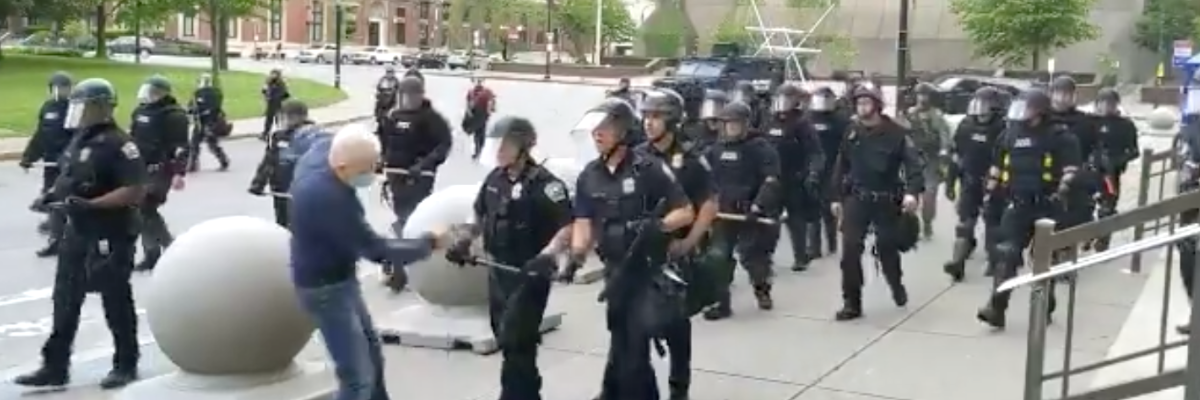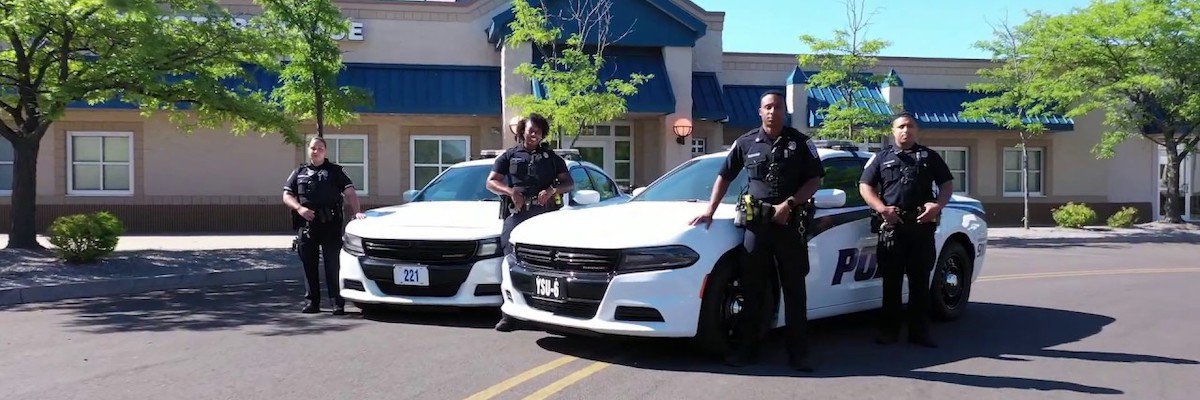Misinformation and disinformation originating from law enforcement sources, which has lately included Antifa raids, brick piles, poisoned milkshakes and more, has sparked considerable interest in the past few months. But journalists who cover the police say this is common — even the rule.
MisinfoCon and MuckRock partnered to compile tools for journalists and others interested in better ways to deal with this kind of dis- and misinformation.
Watch the MisinfoCon/MuckRock panel from September 2020, or view a printable copy of this tipsheet here.
Changing Stories
Accounts of the incident often change later on due to human error. You can help your audience understand that police accounts should not be taken as fact.
- When reporting official police accounts, clarify that they are based on initial reports and subject to change
- Consider including that police accounts of events often change after further investigation
- Cite academic studies showing that the accounts of everyone involved, including police, are subject to perceptual distortions
False Narratives
Watch out for signs that police are using true facts and prepared statements to create a false narrative.
- Clarify if police are sharing redacted or edited information, like cropped bodycam footage
- Keep in mind that any information that’s proactively released is tailored to the narrative the source wants to project
- Case Study: How Chicago Police Created A False Narrative After Officers Killed Harith Augustus
- The Invisible Institute breaks down the process of creating a misleading narrative using carefully timed statements and redacted records
- Case Study: City has an explicit policy of targeting protesters with mugshot tweets to ‘help create a counter-narrative’
- The Guardian obtained emails to show the city of Berkeley had an explicit policy to create a counter-narrative to protestors
Uninformed Sources
Reporters often quote sources like police unions or charitable foundations, who are not actually informed on the incident.
- Don’t use sources for anything other than what they are qualified for
- For example, only quote a police union on their actual work, like wage negotiations
- If you believe something is not true, leave it out of your story entirely. Reporting a fact is “said” or “alleged” can still be misinformation
- Case Study: How Chicago’s ‘Fraternal Order of Propaganda’ shapes the story of fatal police shootings
- The Chicago Reader used follow-up interviews and news stories to find inconsistencies between police accounts, like the police superintendent and their union.
Covering Protests
Try to have a sense of the reality on the ground before showing up.
- Know who the parties are before going in. Who are the protestors? Are they part of an official organization? Who are their leaders? Look up the social media and messages they have sent to their followers.
- Talk to the police before going. Ask: what is happening today? What are they expecting? How are they preparing? Their impression may be different from the protestors’.
- Your story should include witnesses as well as the police’s version of events. Social media posts, like quotes, images and videos, may be included if they are verified first.
- Guide: Guide for Combating Protest Disinformation
- PEN America shares several tools for verifying images, sources and news accounts while reporting on protests.
- Case Study: What Happened May 30?
- South Side Weekly put out a call for statements from witnesses at a protest. At the same time they reported police accounts, they were able to provide differing accounts from witnesses and vetted social media posts.
Vetting Social Media
Do whatever you can to utilize voices other than police, especially witnesses and other primary sources. This includes social media posts, but only if you are very sure that they are accurate and reliable.
-
Background each social media user before sharing. Do they have a real name and profile? Can you determine that they live in that town? They are most likely biased, but would you reasonably suspect them of lying?
-
Guide: Verifying Online Information
- First Draft News is an organization at the center of journalism, misinformation and verification. This guide walks you through high-level guidance and tasks to check off for using online information.
- Tool: First Draft Basic Toolkit
- First Draft News’ Basic Toolkit is a large collection of tools for vetting images, videos, websites and social posts.
Getting Public Records
Public records, like surveillance footage and internal emails, are often the key to understanding the truth of a police response.
- Follow up with police often to encourage faster response
- Find out which agencies own relevant records. This may be transportation, public works, or other public bodies you wouldn’t expect
-
Look up your city and state’s retention deadlines. For example, in Chicago a lot of materials are only held onto for 90 days.
-
Guide: MuckRock guide to opening police departments with public records
- MuckRock offers another webinar and a series of resources on obtaining records to hold law enforcement agencies accountable
- Tool: RCFP Open Government Guide
- State-by-state guide to public records request laws from media lawyers
- Tool: MuckRock
- Management and filing tool for keeping track of public records requests and comparing notes with others
- Case Study: Investigating the police in Oak Park, Illinois
- Adam D. Paradis, librarian, researcher, and public records advocate provides a walkthrough of his public records experience in Oak Park
Header image screenshot of WBFO video by Mike Desmond




